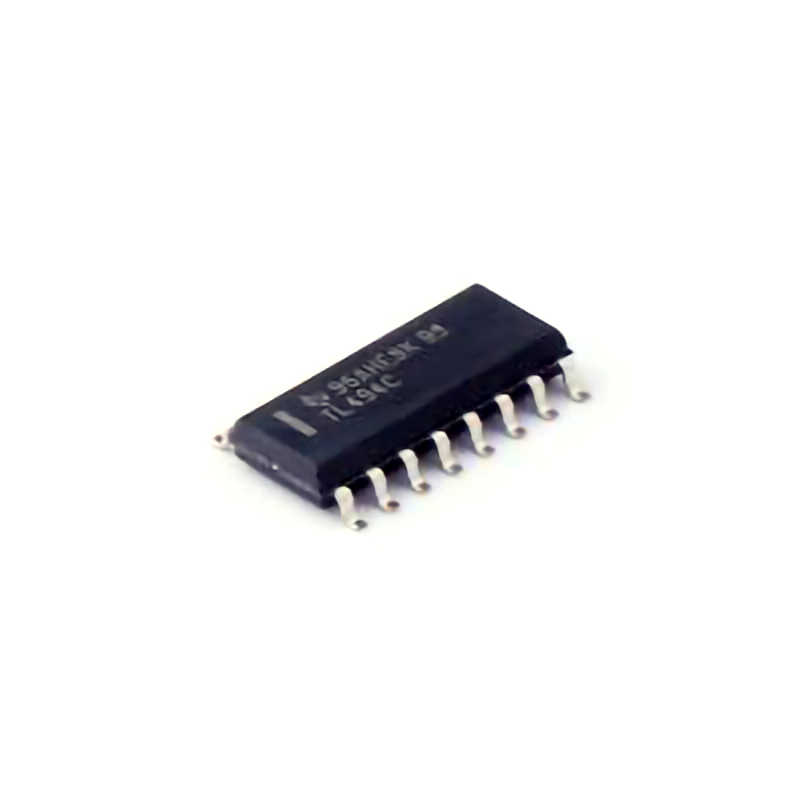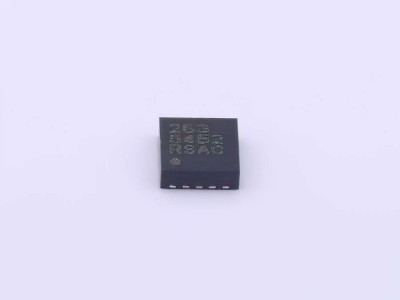
The TL494CDR is a versatile dual Pulse Width Modulation (PWM) controller commonly used in industrial Power supplies. This article explores the significance of the TL494 CDR in optimizing power supply performance, its applications, and how its features enhance system efficiency, reliability, and cost-effectiveness.
The Role of TL494CDR in Industrial Power Supply Optimization
In the world of industrial power supplies, efficiency, reliability, and cost-effectiveness are paramount. Whether it’s in automated factories, telecommunications, or critical infrastructure, the power supply system’s performance can make or break the functionality of a system. One of the critical components used to achieve optimal performance is the Pulse Width Modulation (PWM) controller. In this regard, the TL494CDR dual PWM controller stands out as a robust solution.
Understanding PWM and the TL494CDR
Pulse Width Modulation (PWM) is a technique used in power electronics to control the amount of power delivered to a load by adjusting the width of the pulses in a signal. This modulation is highly effective in regulating voltage and current levels in various applications. The TL494CDR, manufactured by Texas Instruments, is a popular PWM controller designed for use in both DC-DC Converters and AC-DC power supplies.
The TL494CDR features two independent PWM channels, making it particularly suitable for complex power supply systems that require two separate control loops. The versatility of the TL494 allows it to efficiently manage a wide range of power conversion needs, from simple buck or boost converters to more complex configurations such as flyback or forward converters. Its dual channels provide the flexibility needed for applications with multiple voltage rails, making it an ideal choice for industrial power supply designs that need high performance in Power Management .
Applications of TL494CDR in Industrial Power Supplies
One of the primary advantages of the TL494CDR is its adaptability across various industrial power applications. It’s used extensively in power supplies for industrial automation, robotics, telecommunications, medical devices, renewable energy systems, and more.
DC-DC Converters:
DC-DC converters are a staple in industrial systems, offering efficient conversion between different DC voltage levels. The TL494CDR is an excellent choice for these converters because it ensures high efficiency, minimizes power loss, and provides precise control over the output voltage.
AC-DC Power Supplies:
In applications where AC input is involved, the TL494CDR can be configured for AC-DC conversion. Its ability to handle high-frequency switching makes it ideal for applications that require small form-factor power supplies while maintaining high efficiency.
Switching Power Supplies:
Switching power supplies, which are commonly used to power sensitive electronic equipment, benefit from the TL494CDR’s ability to provide stable, regulated output with low ripple. Its two PWM channels allow it to control the primary and secondary stages of the converter separately, improving overall performance.
Battery Chargers and Power Management :
Battery-powered equipment, especially in industrial or mobile settings, often requires optimized charging solutions. The TL494CDR is well-suited for applications such as battery chargers, where it can manage charging voltages and currents with precision, enhancing battery life and reducing inefficiencies.
Features of TL494CDR that Drive Optimization
The optimization capabilities of the TL494CDR come from its rich feature set, which includes both internal and external configuration options to fine-tune performance. Here are some of its most notable features:
Dual PWM Outputs:
The TL494CDR’s dual PWM outputs allow it to independently control two separate channels. This is especially beneficial in applications where multiple output voltages are required or where a high degree of regulation is necessary. For example, a power supply with two output rails—one for the logic circuitry and one for motor drives—can use the two PWM channels to control both simultaneously.
Adjustable Dead Time Control:
The TL494CDR provides an adjustable dead time between the high-side and low-side transistor s. Dead time control is essential for preventing short-circuits or cross-conduction between the transistors, which can cause excessive heat generation and reduce the efficiency of the power supply. This feature helps minimize switching losses and improve overall system efficiency.
Internal Error Amplifiers :
The TL494CDR integrates error amplifiers, which are critical in feedback control for maintaining stable output voltages. The internal error amplifiers work in conjunction with external components to optimize voltage regulation, enhancing both load regulation and line regulation.
Frequency Control:
The TL494CDR offers flexibility in frequency control, allowing the designer to set the switching frequency based on the application’s requirements. The ability to adjust the switching frequency is beneficial for optimizing the efficiency and size of the inductors and capacitor s in the power supply.
Overcurrent and Thermal Protection:
Protection features such as overcurrent detection and thermal shutdown are built into the TL494CDR. These features ensure the power supply operates safely, protecting the components from damage due to overcurrent conditions or excessive temperatures.
Efficiency Improvements with TL494CDR
One of the key reasons the TL494CDR is favored in industrial power supplies is its ability to significantly improve system efficiency. Power supply efficiency is crucial in minimizing energy losses, particularly in high-load or continuous-duty applications. By maintaining high-frequency switching and enabling optimal control of power delivery, the TL494CDR ensures that the system consumes less energy while providing stable and reliable output.
Moreover, the TL494CDR's ability to operate at variable frequencies helps tailor the power supply to specific needs, balancing efficiency with component size. Lower switching frequencies typically require larger inductors and capacitors, while higher frequencies reduce component size but can increase switching losses. The TL494CDR allows designers to find an optimal balance, achieving both high efficiency and compact design.
Advanced Techniques and Design Considerations for Optimizing TL494CDR-Based Power Supplies
While the TL494CDR offers powerful features for optimizing industrial power supplies, the best results come from understanding how to leverage its capabilities within the broader design and system context. Proper integration of the controller with other system components—such as inductors, capacitors, feedback loops, and transistors—can further enhance power supply performance and reliability.
Optimizing Switching Frequency and Dead Time
The selection of switching frequency is a critical factor in determining the efficiency and size of power supply components. While the TL494CDR supports a wide range of switching frequencies, the right frequency for a given application depends on several factors, including:
Load requirements: A higher frequency is typically preferred for lighter loads or small-scale applications, as it reduces the size of passive components and improves transient response. However, higher frequencies can also increase switching losses and reduce overall efficiency at high load currents.
Component size and cost: Higher switching frequencies allow the use of smaller inductors and capacitors, leading to a more compact design. However, higher frequencies also demand more stringent component specifications, which can increase the overall cost.
To optimize switching frequency, designers can employ external control pins available on the TL494CDR to fine-tune the frequency or use external frequency modulation techniques. Furthermore, by adjusting the dead time (the time during which both switches are off), designers can mitigate switching losses and prevent overheating.
Fine-Tuning Feedback Loops for Stability and Regulation
The TL494CDR integrates feedback control through its internal error amplifiers, but external feedback loops are often required to maintain tight voltage regulation and ensure stability under varying loads. Fine-tuning these feedback loops involves selecting the correct compensation components (such as resistors, capacitors, and inductors) to achieve the desired transient response.
Properly designed feedback loops allow the TL494CDR to maintain stable output voltage despite changes in load or input voltage. This is particularly important in industrial applications, where power demands can fluctuate significantly.
Additionally, feedback loops help minimize ripple voltage—the small fluctuations in voltage that can lead to system instability or even component damage in sensitive equipment. By carefully optimizing the feedback circuit, ripple can be reduced to acceptable levels, ensuring stable performance and protecting downstream electronics.
Thermal Management and Protection Features
Thermal performance is a key consideration in power supply design. While the TL494CDR offers integrated thermal protection, designers must take additional steps to manage heat dissipation in power-intensive applications. High currents, high-frequency switching, and inefficient components can all contribute to excessive heat buildup.
To optimize thermal management, designers should:
Use efficient power MOSFETs and diodes: By selecting low-loss, high-efficiency switching transistors, designers can reduce the amount of heat generated during switching events.
Improve PCB layout: Proper layout can minimize heat concentration and improve heat dissipation. Larger copper planes, thermal vias, and heat sinks can help spread and dissipate heat more effectively.
Incorporate external cooling mechanisms: In some high-power applications, external cooling mechanisms like fans or heat sinks may be required to maintain optimal thermal conditions.
Leverage the TL494CDR’s overcurrent protection: This built-in feature can detect abnormal conditions, triggering shutdown or reduced output to prevent thermal runaway and protect sensitive components.
Integrating TL494CDR with Other Power Management Components
For maximum performance, the TL494CDR can be used in conjunction with other power management components, such as power MOSFET drivers, current sensing circuits, and feedback amplifiers. Integrating the TL494 with these components enables more precise regulation and protection, ensuring the system operates within safe and optimal parameters.
Additionally, many industrial systems require multiple power rails. The dual PWM capability of the TL494CDR makes it ideal for powering multiple outputs from a single controller. By synchronizing the operation of both channels, designers can ensure that voltage rails are kept stable and consistent across varying loads.
Conclusion:
The TL494CDR dual PWM controller is a cornerstone in optimizing industrial power supplies, offering features that balance performance, efficiency, and reliability. With its dual PWM outputs, adjustable frequency control, internal error amplifiers, and protection features, the TL494CDR enables engineers to design sophisticated, high-performance power systems for a wide range of industrial applications.
By leveraging the full capabilities of the TL494CDR, designers can significantly improve system efficiency, reduce heat generation, enhance component longevity, and achieve tighter voltage regulation, all while keeping costs down. Whether designing a DC-DC converter, AC-DC power supply, or battery management system, the TL494CDR is an essential tool for achieving optimal power supply performance in modern industrial applications.
Partnering with an electronic components supplier sets your team up for success, ensuring the design, production, and procurement processes are quality and error-free.


